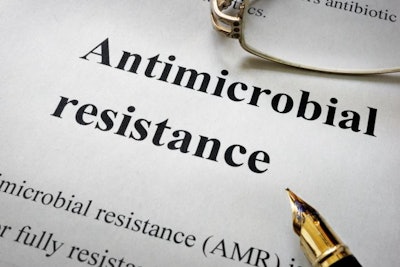
The Food and Agriculture Organization of the United Nations (FAO), World Organisation for Animal Health (OIE) and the World Health Organization (WHO) surveyed WHO member states about how they are tackling antimicrobial resistance (AMR).
“Antimicrobial resistance is a grave threat to human health and economic development,” the organizations said in a report summarizing the survey. “The overuse and misuse of antimicrobials in humans, animals and plants have accelerated the natural evolutionary processes by which microbes become resistant to antimicrobial treatments.”
The report said AMR “is likely to exacerbate global economic inequality, with the economic costs disproportionately affecting poorer countries. On the animal side, the World Bank has projected significant decreases in international trade due to AMR as a result of decreases in the trade of livestock and livestock products.”
However, the report says there has been “sustained progress in the development of national action plans and action to address AMR, even if the ambitious target of having national AMR action plans for every country by 2017 was not achieved.”
Out of 194 WHO member states contacted, 154 countries responded to the survey – a response rate of 79.4 percent representing 91.3 percent of the world’s population.
Some key findings in the report:
- Only 64 countries report that they follow FAO-OIE-WHO recommendations to limit the use of critically important antimicrobials for growth promotion in animal production. Only 3 countries from WHO’s African Region and 7 countries from the WHO Region of the Americas have taken this important step to reduce the emergence of antimicrobial resistance.
- 67 countries report at least having legislation in place to control all aspects of production, licensing and distribution of antimicrobials for use in animals. But 56 either said that they had no national policy or legislation regarding the quality, safety and efficacy of antimicrobial products used in animal and plant health, and their distribution, sale or use, or that they were unable to report whether they have these policies in place.
- Among the top 10 chicken-, pork- and cattle-producing countries that responded to the AMR survey, 9 out of 10 have at minimum developed a national action plan. Of those top 10, only China and the U.S. are in the highest tier (Level 5) of national action plan for all three species. Brazil is in Level 2 for all three species.
- 78 countries have regulations in place to prevent environmental contamination generally, but only 10 of them report having comprehensive systems to ensure regulatory compliance for all waste management, including regulations that limit the discharge of antimicrobial residues into the environment.
- 100 countries now have national action plans for AMR in place and a further 51 countries have plans under development, but more needs to be done to ensure that they are implemented.
- 53 countries report that they have a multisectoral working group that is fully functional, although a further 77 have established such a group.

















